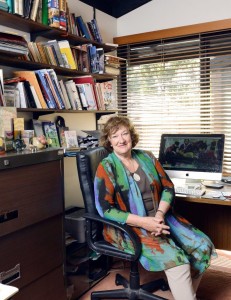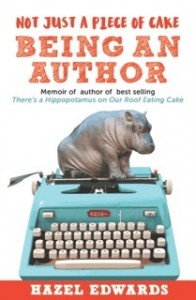Situation Vacant: Writing My Memoir

Photo by Copyright Agency
Business memoirs are read in airports by corporates looking for effective strategies. First-timers also look at the style in which others write. And what to leave out. Family history travelers try to organize their material, without alienating friends and family.
Writing a corporate biography requires the same skills as writing a personal memoir, plus a little more diplomacy.
Increasingly corporations want to record their lives beyond financial statements
BUT rarely would you see a request for a writer in Situations Vacant. Usually it’s a word of mouth recommendation.
A ‘memoir’ can be brief, and focus only on an aspect of a life. Readers like a personal memoir to be more candid, so they can live that life vicariously for the length of the story and beyond.
Autobiographies or biographies are more formal, longer and often in chronological order.
As a children’s author, I’ve used my ‘real’ experiences elsewhere in fiction.
However, this year I changed my work style and decided to write a memoir.
Health issues forced me to stop flying. I needed to downsize and de-clutter my literary files.
I wanted the intellectual challenge of writing in a different way, not by boring chronological listing, but by anecdotal association. Anecdultery I call it. So the memoir was to be styled as an exploration of the process of creativity as a children’s author. But ‘memoir’ is so ‘old-fashioned’; I wanted to call the ‘slice of autobiography’ something else. A Questory?
My challenges in writing ‘ Not Just a Piece of Cake: Being an Author’…
Choosing a Working Title
As the first clue to content, the title needed to indicate themes, like the creativity and dilemmas of being a children’s author. Sub titles are useful and so are questions. A working title can always be improved upon. My cake-eating, rooftop Hippo character needed a mention but this memoir is more than only that concept. ‘Not Just a Piece of Cake’ implies the task is harder than others expect. But the same applies whether writing for children or adults hence subtitle ‘Being an Author’.
Reader?
Adult or child or both? If both, this affected the structure, content, visuals, length and even the vocabulary. Many child fans email questions about being an author but the major readership is ‘nostalgic’ adult who remembers childhood books or those interested in creativity.
Structure
My table of contents kept changing order and titles. Using the cake symbolism, I alternated chapters like cake slices (slices of life), but it didn’t work. Then conversational sub headings within chapters as clues of content was ‘bitsy’. Answering common questions was a possible structure. Or a book format which could be turned upside down? Read from one end as a child the other as an adult? (Had used the upside down approach for dual viewpoints in son Trevelyan’s adventure memoir ‘Cycling Solo:Ireland to Istanbul’ but some just thought it misbound.)
Tone
After reading a stack of autobiographies (including e-books so it wasn’t really a stack but more of a tablet), decided the vital ingredient was ironic and self-deprecating humour. ‘I’itis of ego to be avoided at all costs. Which relationships to include? Would the ones not mentioned feel insulted? Finally decided to include family, friends and colleagues only if they symbolized a way of working or solving a creative problem.
Range & Style
I wanted to avoid the introspective writer writing about being a writer. Choices? Use the adventurous expeditioner part of Antarctica, which I already possessed in published articles? Or write a more general over-view of the significance of the adventurous experience which was important participation-observation research? I became aware of the value of immediacy in articles written just after events. And the value of re-using them, edited. In ‘Authorpreneurship’ I’d already covered the business side of being a children’s author as an up- to- date ‘how to’…This was different: meant to be amusing but more personally candid and with some philosophical depth.
Sequencing
Deciding on the logical order of the chapters was a challenge. Deleting repetitions of hippocampus concept. Plateau of Boredom needed to come earlier as the serious chapter on the process of creativity. Positioning the shorter, quirky child-centred hippo chapters earlier. Unsure whether to cut out the detail of being on tour, or retain as realistic example of a how an author works in public.
For once I didn’t have a theme, that vital ideas thread. It evolved. As a quest or Map of Serendipity: planned randomness. Fortuitous mapping. Needed to emphasise the Process of Creativity as a mix of persistent work & serendipity & occasional fun.
Tense
Was the ‘I’ the adult Hazel, and did that make everything earlier past tense? Or should continuing things be in present tense? Both?
Biog
I’ve enjoyed reading biographies of ‘behind the book’ with female writers. How candid is enough?
Importance of formatting an unconventional memoir
Scrap-bookish? Sidebars of facts? What if the reader is bored? Authors always have doubts. Writing is not just a piece of cake.
Situation no longer Vacant. The memoir has been finished.
—
Hazel Edwards OAM is the author of ‘There’s a Hippopotamus on our Roof Eating Cake’. Her ‘Writing a Non Boring Family History’ workshops are popular with ‘genis’ families. Her ‘Authorpreneurship: The Business of Creativity’ was published by ASA’s Keesing Press in 2012. ‘ Not Just a Piece of Cake; Being an Author (Brolga) was released in November, 2015.
Find out more about Hazel on her website http://hazeledwards.com/
Category: On Publishing


























